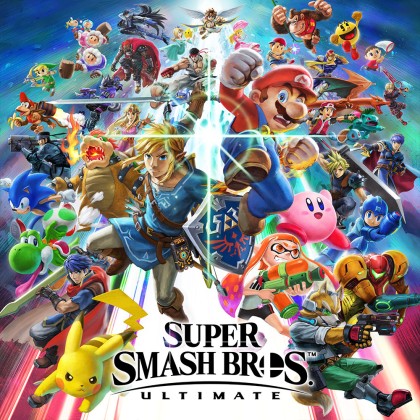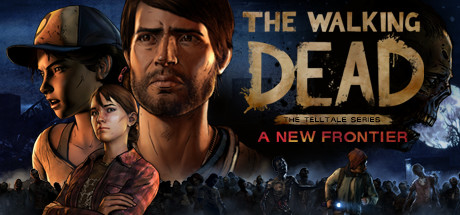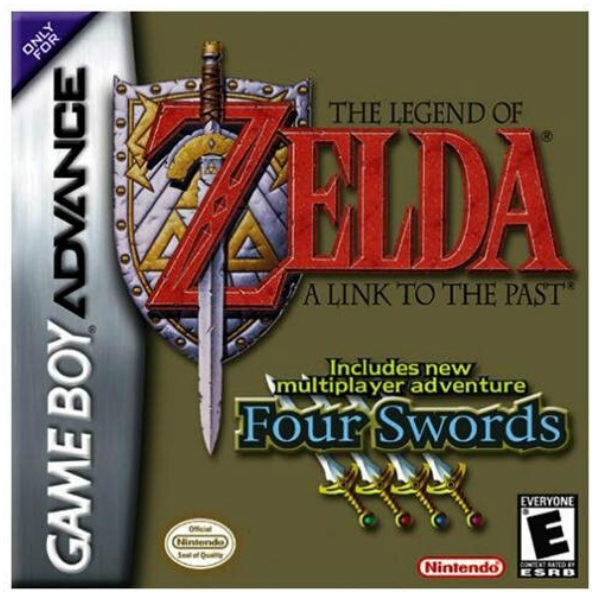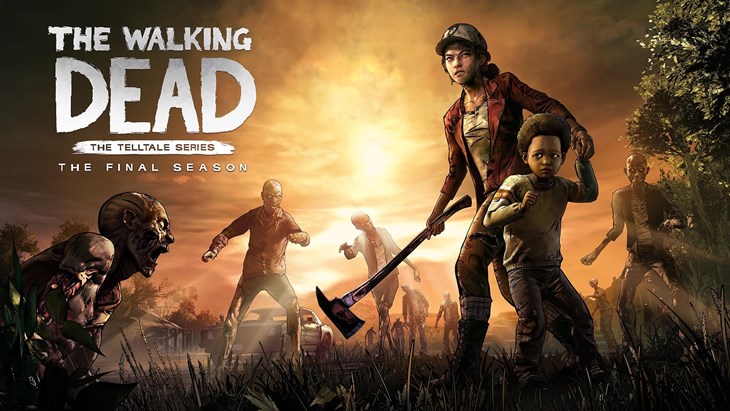Played on Nintendo Switch
It’s no exaggeration for me to say that I’ve been playing Super Smash Bros. for the better part of my life. I’ve been playing the series ever since the release of the first game 20 years ago, and I’ve been in love with it ever since. Since then, I’ve played and 100% completed every entry in the series, as well as enjoyed countless hours in multiplayer with my friends. I’ve easily invested more time into this series than any other. If you added the total number of hours together that I’ve played each game, it would probably easily total over 1000 hours by this point. All of this is to say that I’m by no means coming at this review of Super Smash Bros. Ultimate as a newcomer, but rather as a long-time diehard fan of the series.
I’d like to first address any potential newcomers here before I get into the nitty-gritty of changes made in Ultimate. Unlike a lot of series out there, I never felt like Super Smash Bros. required any background in order to get the newest addition in the series. So, if you’re interested in trying out Smash Bros. and are wondering where to start, feel free to jump right into Ultimate. There are many tools and customization options in the game that will allow you to learn the mechanics and find a way to play that will be fun for you. The amount of options might initially overwhelm, but I think this is a better route than trying previous games with even less ways to get into the series. Just try out some different stuff in the game, find out what works for you, and enjoy yourself.
I’ll also give a brief explanation of what the game is for the uninitiated. Essentially, Super Smash Bros. has always been the big fighting crossover series for Nintendo. Ever since the first entry, it’s taken characters from multiple Nintendo series (and has since then expanded into other third-party characters) and put them in a game together. Ever wondered who would win in a fight between Mario and Link? Now you have the chance to find out. So, you choose one of the many fighters available in Ultimate (there’s over 70 in this entry!), pick a stage to fight on, and then try to beat your opponent. Unlike most other fighting games where you’re trying to deplete a health bar (although there is a similar fighting option in the game), you’re simply trying to hit your opponent and get there percentage high. The higher a percentage goes, the farther you’re able to knock them back when you hit them, and the ultimate goal here is to knock your opponent off the screen. When you boil it down to the basics, it’s a simple enough concept to grasp, but when you start to learn advanced tactics and gain experience with the game, things can get really crazy and tense in the matches. It’s an insanely fun premise for a game, and a nice take on the fighting genre, so if you’ve never played Smash before and this sounds like fun to you, feel free to stop reading this now and just go and enjoy the game. You won’t regret it.
But let’s face it, most people that are going to buy Super Smash Bros. Ultimate are already long-time fans, so I don’t need to explain what the game is to you. You already know what it is, and chances are you were going to buy this game even without reading a review. But still, I’d like to address the rest of this review to the diehard fans of the series like myself, because it’s going to be most worth my time of reviewing this to discuss what’s new to this specific entry in the series, rather than talking about mechanics that most people are already familiar with.
The biggest new addition to Ultimate is the spirits. This game seems to have a theme of being a celebratory achievement for the series, and the spirits are one of the biggest examples of that. Basically, the primary way to collect spirits (which seem to have replaced the trophies from the previous games) is to fight them. Each spirit is meant to be a video game character, and their spirit fight is meant to replicate conditions that are unique to that character. For example, most Zelda fans will be familiar with the Bokoblin enemy. For Bokoblin’s spirit fight, you will be fighting King K. Rool (since he’s the character in the fighter roster that most resembles a Bokoblin), and he’ll start the battle with a club. Some of these spirit fights are really clever, since the game designers really put forth a lot of effort into making each spirit fight be indicative of the character they’re supposed to represent. There are over 1300 spirits to collect in Smash Ultimate too, so there’s definitely no shortage of fun spirit fights to engage in.
The other big mode that’s featured in Smash Ultimate is World of Light. Many fans like myself really loved having a story mode in Brawl, and so we missed having one in Smash 4. So, I was happy to see that Smash Ultimate was going to have a new story mode again, and that’s what World of Light is. However, if you played Subspace Emissary in Brawl, don’t expect World of Light to be the same thing, because it’s far from it. While Subspace was really similar to a platformer, World of Light is much more akin to an RPG. Rather than going through platforming levels, you’re instead placed on a large overworld map, where you’ll travel from battle to battle. These battles that you fight in are all spirit fights, and so this mode will actually be where you face a pretty large number of the spirits in the game.
However, where the RPG elements really come into World of Light is in how you upgrade and equip yourself for the fights. One place where you upgrade any character you’re fighting as is in the Skill Tree, where you spend spheres that you earn in battle to learn new abilities and gain new advantages in battle. However, before every fight, you also have the option of equipping spirits that you’ve already earned to your character in order to give yourself an advantage in the fight. The game will help autopick for you if you don’t want to pick spirits yourself, but basically you’re going to want to equip spirits that give you an edge in the fight. An easy example of this is that some spirit fights have stage conditions such as an ice or lava floor, but luckily there are spirits that grant you immunity to these things, and so you’d naturally want to equip those spirits during those battles. For better or worse, this makes World of Light much more like an RPG because a lot of times strategy is more important than skill. If you have the right spirits equipped, you can easily take down an opponent that would have seemed impossible before.
I’m gonna be honest, I preferred the story mode in Brawl much more than in Ultimate. Some of this might just come down to personal taste, since I generally like platformers more than RPGs, but I don’t think I’m alone on this. World of Light is a really interesting idea, and I think its mechanics are very well-implemented, it just wasn’t what I personally wanted from it. My biggest problem with it is actually just that I feel like it’s too bloated. In Brawl, I remember completing the story mode in about 10 hours, but World of Light took me more around 25-30 hours to complete. Don’t get me wrong, I don’t think a longer length inherently makes it worse, it’s just that World of Light gets kind of repetitive after a while since all it winds up being is a bunch of spirit fights. Again, I love the spirit fights in concept, but after a while it started to lose its charm in World of Light, and honestly it gets easier as you go because you start to get really powerful spirits that make most of the fights a joke.
One mode I definitely want to talk about in Smash Ultimate is Classic mode. I normally wouldn’t go too in-depth with this since it’s been a mode in Smash Bros. since the very first game, but it’s been given a complete overhaul in Ultimate, and so I honestly think it’s the best it’s ever been. It’s still the same concept of playing through multiple fights until you get to a final boss fight (much like an Arcade mode in any other traditional fighter), but the difference here is that the fights are no longer random like they were in previous games. The game designers actually took the time to create a unique path of fights in Ultimate for every single character. Much like with spirit fights, the paths for each character are meant to exploit specific traits that the character has, and so for a lot of them they’re going on a journey that they would be likely to travel in their own games. It’s really neat, and I think the developers did a fantastic job making each path unique to a character.
Other than that, there isn’t a ton that’s actually new in Smash Ultimate. In fact, certain modes like All-Star and Home-Run Contest have been removed entirely. I think the main reason for the lack of a ton of new material (outside of the whole World of Light and Spirit modes that are huge) is that, like the title implies, this is meant to be the ultimate Smash Bros. game. It’s meant to celebrate the series, and so the focus was put into giving us everything we loved from past games more than anything else. As such, for the first time ever we have every single character that’s ever appeared in a Smash game all in one package. This is really wonderful, as I really missed characters like Snake, and so it’s nice to see a game that has no cuts for characters, but rather gives us everything in one. If this sounds appealing to you, then Smash Ultimate is likely to satisfy.
That’s not to say that there’s nothing else new in Smash Ultimate, though. There ARE some new fighters and stages, it’s just that it’s much less than in other new entries. While there are over 100 stages in the game, most of them are from the previous entries, with only about 4 or 5 being new ones. It’s the same with the characters…there are over 70, but there aren’t many completely new and original characters. There are some clones of existing characters (which are called “Echo Fighters” in the game) such as Daisy and Dark Samus (which are clones of Peach and Samus) that have been added, but otherwise there’s only really six new original characters. Out of the new characters, my favorite is Simon Belmont, and my least favorite is Incineroar. Inkling, King K. Rool, and Isabelle are also pretty fun to play, but Ridley feels slightly weird to me.
The diehard completionists might be wondering how long it’ll take to do everything in Smash Ultimate. I winded up completing the game after about 70 hours, but part of that also just included me screwing around and having fun in random Smash matches. I’m thankful there isn’t really much of a grind to collect things like there was in past Smash games. I remember spending way longer than I would have liked trying to grind for all of the Mii Headgear in Super Smash Bros. for Wii U, so luckily the collectibles come a lot easier in Ultimate. The main things to do in order to complete Smash Ultimate are to 100% World of Light, complete Classic with all characters, collect all of the spirits, and complete all of the challenges (of which there are 124 in this game). After all was said and done, it took me about 70 hours. I’m definitely satisfied with this, especially since I felt like it was time well spent, rather than time spent grinding for things.
Like I said earlier, though, chances are that if you love Smash Bros. you were already going to buy this game before reading this review. I’m basically here to confirm your bias, and so yes, Super Smash Bros. Ultimate is another amazing game in the series. While World of Light (or spirits in general) might be a mixed bag for some since they’re so different from what we’re used to, the core game is definitely likely going to appease fans of the series. I basically consider Smash Ultimate to be the Greatest Hits entry of the series, so I think Smash fans are definitely going to like it.
4.5/5




Hmm it appears like your website ate my first comment (it was super long) so I guess I’ll just sum it up what I submitted and say, I’m thoroughly enjoying your blog. I as well am an aspiring blog blogger but I’m still new to the whole thing. Do you have any recommendations for newbie blog writers? I’d really appreciate it.
Of course, what a magnificent blog and educative posts, I will bookmark your website.Have an awsome day!